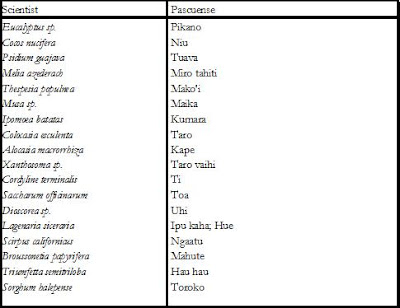Location
Geography
The island does not have permanent riverbeds of water, only some gullies have sporadic runoffs depending on the abundance and torrential on the rainfalls. Three lacustrine bodies exist in the craters of Rano Aroi, Rano Raraku and Rano Kao. Nevertheless, it presents a good availability of underground waters. The water shows near the coast in a series of wells, which often contain water lightly salt for your nearness to the sea.

- The coldest month is an August of 14ºC to 17ºC during the day.
- The warmest month is a February of 24ºC to 28ºC during the day.
- The most rainy month of the year is A May.
The temperature of the water of the sea changes between 18ºC and 25ºC.
Population

Languaje
The official languages are the Spanish and the rapanui. In addition, for being a highly tourist zone the major segment of your inhabitants they handle in addition the French, Germany, Chinese, between others.
Nowadays is in use the Chilean peso, though also they work with the dollar and the Euro, for the tourist topic, in turn still the barter continues being in use as form of payment, the equal one like it was made by them your ancestors.
Flora and Fauna
Flora
In spite of his subtropical climate and, unlike other islands polynesic, the Easter Island presents a minimal ecological complexity and a great poverty in your diversity floristic. 90 % of the surface of the island is a dry sheet with a herbaceous abundant stratum composed for the most part for gramíneas introduced, between that occasional bushes are inserted and forest with spice also exotic.
Recent studies paleobotanists have demonstrated that in the past there existed in the island wooded masses of importance, extensive bushes and meadows of pastures and ferns. There have been identified 212 species of plants (extinct and current), of which 46 are native and 166 introduced ones.
Such arboreal extinct species as
Toromiro (Sophora toromiro)
Palm of pascua (Paschalococcus disperta)
Peralillo (Coprosma Sp.).
16 species of ferns, some acquaintances vulgarly like "Nehe Nehe" (Asplenium adiantoides, A. obtusatum, Doodia paschalis y Microlepia strigosa), Matu'a Pu'a (Polypodium scolopendria), "Tia Pito" (Ophioglossum coriaceum y O. reticulatum) y "Atua" (Vittaria elongata) And 8 more without names vernacular names of the kinds Thelypteris, Diplazium, Elaphoglossum, Polystichum, Davallia y Psilotum.
Other species of interest with names scientist and pascuense:

Fauna
The diversity of vertebrates is very poor. In mammals only there exist such introduced species as:
Mice (Rattus rattus)
Guarenes (Rattus norvegicus)
Lauchas (Card game musculus)
The same thing happens with terrestrial birds between which we find
Hen (moa)
doves (Columba livia)
sparrows (Passer domesticus)
tiuques (Milvago chimango)
partridge (Nothoprocta perdicaria)
diuca (Diuca diuca)
In case of the terrestrial reptiles two autochthonous species exist:
Moko uru-uru kahu (Lepidodactylus lugubris)
Moko Uriuri (Ablepharus boutoni)
In the sea the wealth is different, being relied on by a subtropical sea by corals where other animals live numerous. The fish described for the Easter Island are 111 species of which 97 are coastal species. The better represented families are:
Labridae (13 sp)
Muraenidae (7 sp)
Chaetodontidae (7 sp)
Holocentridae (6 sp)
It is necessary to mention also the lobster of Easter, called locally Hakarana very estimated by your size and flavor.
Due to the isolation of It Rapa Nui, approximately 25 % of the fish is endemic; this is, that are not in any other place of the world.
In addition there exist 11 species of marine birds that, together with living habitually in the island, nest in it. Some of these birds as:


On the other hand the coasts are visited by some such marine occasional reptiles as:
Tortoise tortoise-shell (Eretmochelys imbricata)
Green tortoise (Chelonia mydas and Ch. Japonica)
Viper of sea (Pelamys platurus)
There exist in addition a few small own and exclusive snails of land of the Polynesia that, surely, were travelling from stowaways together with the navigators when these were transporting plants with land.